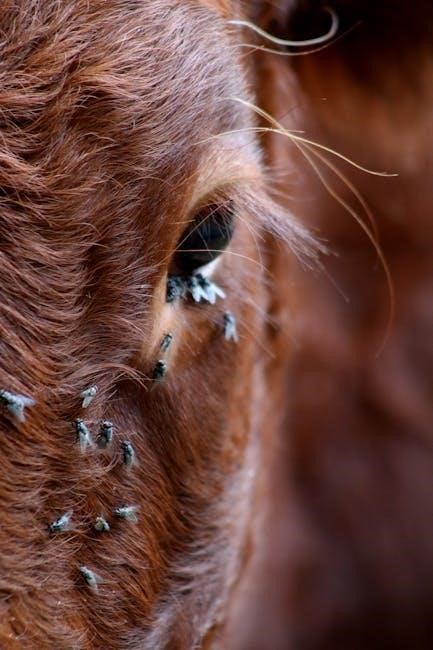William Golding’s timeless tale explores human nature through stranded boys on a tropical island, sparking reflections on society, morality, and survival in a BBC One adaptation.
Overview of the Novel
Lord of the Flies, a gripping tale by William Golding, explores the descent into chaos of young boys stranded on a tropical island after a plane crash. The novel examines themes of human nature, morality, and civilization through their struggles to survive and govern themselves. Recently adapted into a 4-part BBC One drama, the story remains a timeless commentary on societal structure and individual behavior. Its universal relevance continues to resonate, making it a cornerstone of both academic study and modern media adaptations, offering insights into human behavior under stress and isolation.
Author and Historical Context
William Golding, a British novelist and Nobel laureate, published Lord of the Flies in 1954, drawing inspiration from his experiences in World War II and his observations of human behavior. The novel reflects Golding’s pessimistic view of human nature, shaped by the post-war era’s societal upheaval. His teaching career and fascination with psychology further influenced the exploration of morality and savagery in the story. Set against the backdrop of a fictional war, the novel remains a powerful commentary on humanity, written during a time of global uncertainty and existential reflection.
Plot Structure
The novel follows a group of boys stranded on a tropical island after a plane crash, exploring their descent from order to chaos and eventual rescue.
The story begins with a group of British schoolboys stranded on a tropical island after a plane crash. Ralph, the protagonist, is elected leader, while Jack becomes his rival. Piggy, the intelligent and rational boy, tries to maintain order. Simon, the quiet and insightful one, discovers the island’s secrets. Roger, initially subdued, later descends into cruelty. The island, with its lush vegetation and isolated beaches, serves as both a paradise and a prison. The setting establishes a microcosm of society, where the boys’ true nature gradually unfolds.
Rising Action: The Struggle for Power
The novel’s tension escalates as Ralph and Jack’s leadership clash intensifies. Ralph prioritizes building shelters and maintaining order, while Jack focuses on hunting and gaining power. The group’s unity fractures as Jack forms his own tribe, luring followers with promises of meat and freedom. The conch shell, once a symbol of democracy, loses its authority. The boys’ behavior becomes more primal, reflecting their descent into savagery. The struggle for dominance reaches a boiling point, setting the stage for the tragic events that follow. The island’s environment mirrors the chaos, as fear and ambition drive the boys further from civilization.
Climax: The Death of Simon
Simon’s tragic death marks the novel’s climax. While uncovering the truth about the “beast,” Simon realizes it is a dead pilot, dispelling the boys’ fears. Returning to share this revelation, he is met with chaos. In the midst of a violent storm, the boys, consumed by fear and savagery, mistake Simon for the beast and brutally kill him. This event signifies the complete breakdown of civility and the dominance of primal instincts. The loss of Simon, the voice of reason, accelerates the group’s moral decline, leaving Ralph isolated and vulnerable to Jack’s relentless pursuit of power.
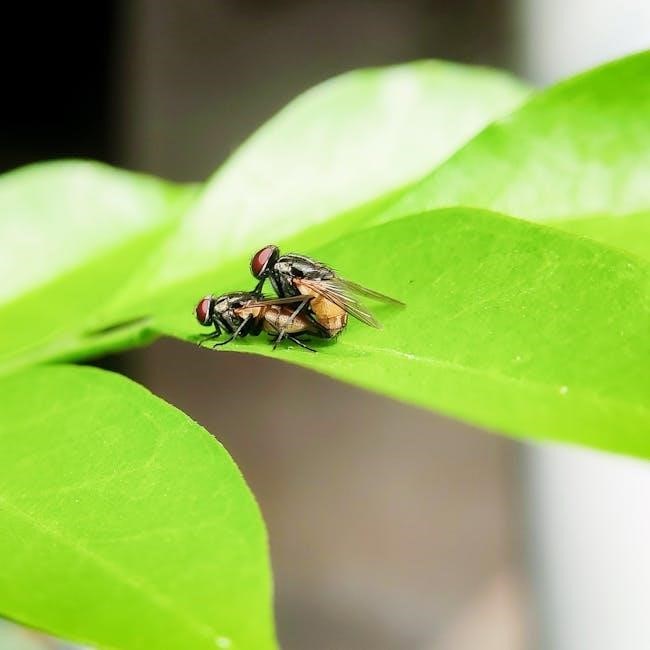
Falling Action: The Hunt for Ralph
Following Simon’s death, the group’s savagery escalates, and Ralph becomes Jack’s target. Jack’s tribe, fueled by fear and primal instincts, hunts Ralph relentlessly. Ralph, isolated and terrified, flees into the jungle, where he narrowly escapes capture. The boys’ descent into brutality is evident as they employ cruel tactics to flush Ralph out. This chaotic pursuit heightens the tension, showcasing the complete erosion of their civilized behavior. The hunt for Ralph symbolizes the collapse of their makeshift society and the triumph of savagery, setting the stage for the novel’s poignant resolution and the boys’ eventual rescue.
Resolution: Rescue and Reflection
The novel concludes with Ralph’s rescue by a naval officer who arrives on the island, shocked by the boys’ savage state. Ralph, overwhelmed with grief and relief, weeps for the loss of innocence and the destruction of their makeshift society. The officer’s presence restores order, but the boys are left to reflect on their actions. Jack’s tribe disperses, and the island, once a symbol of freedom, now represents the harsh realities of human nature. The rescue marks the end of their isolation but leaves lingering questions about the true nature of humanity and the consequences of unchecked savagery.
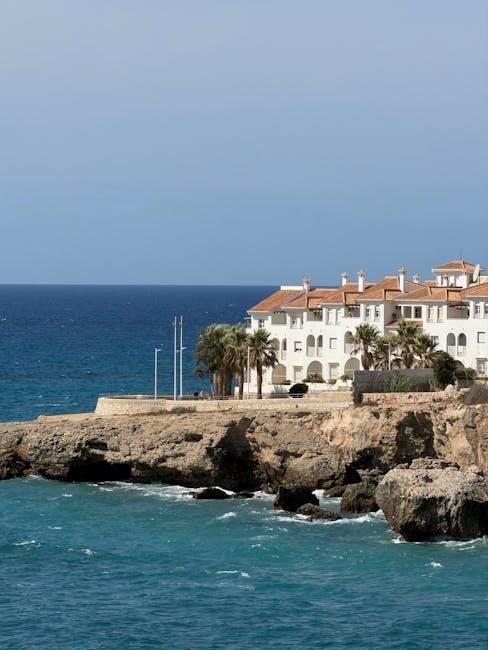
Themes in “Lord of the Flies”
The novel explores themes of human nature, civilization vs. savagery, leadership, fear, and morality, highlighting the descent into chaos when order is abandoned, reflecting primal instincts.
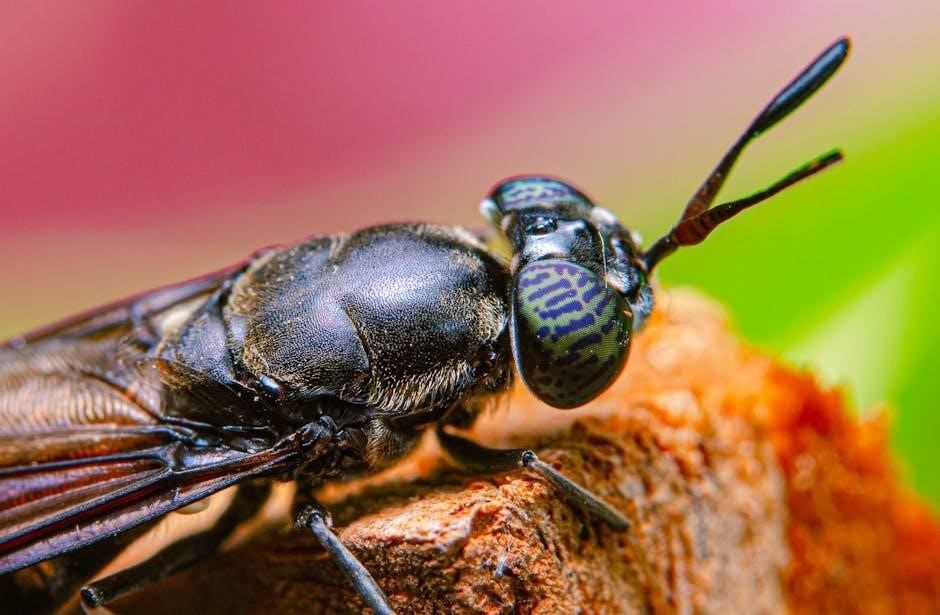
Human Nature and Society
The novel portrays human nature through the boys’ descent into savagery, revealing inherent evil beneath civilization’s veneer. The BBC adaptation underscores the story’s timeless relevance, exploring how societal structures crumble without authority. Golding examines primal instincts and the effects of isolation, mirroring real-world entrepreneurial struggles. The Journal of General Education highlights curriculum ideals, reflecting the novel’s exploration of human behavior and moral decay. Entrepreneurs relate to Ralph’s challenges, illustrating the universal struggle between order and chaos, making the novel a profound commentary on humanity’s duality and societal fragility.
Civilization vs. Savagery
The novel vividly contrasts civilization and savagery through the boys’ behavior on the island. Initially, they attempt to maintain order, but primal instincts gradually dominate. The BBC adaptation highlights this transition, showing how the absence of societal constraints leads to chaos. Golding illustrates the thin line between civility and savagery, as the boys resort to hunting and violence. This struggle mirrors the entrepreneurial challenges mentioned, where decision-making under pressure can lead to moral compromise. The island becomes a microcosm of humanity’s dual nature, emphasizing the fragility of civilization and the enduring presence of savage instincts.
The Role of Power and Leadership
The struggle for dominance among the boys reveals the complexities of leadership and power. Ralph’s democratic approach contrasts with Jack’s authoritarian rule, highlighting the tension between cooperation and control. The BBC adaptation underscores how leadership styles influence the group’s stability. Golding portrays Ralph as a symbol of order, while Jack embodies the desire for power and dominance. Entrepreneurs, like the boys, face similar dilemmas, where leadership choices can either unite or divide. The novel shows how the pursuit of power can lead to chaos, emphasizing the importance of ethical leadership in maintaining harmony and achieving collective goals.
Fear and Its Impact on Behavior
Fear plays a pivotal role in shaping the boys’ actions and decisions on the island. The unknown threat of the “beast” creates widespread paranoia, driving the group to irrational behavior. As fear intensifies, it undermines their fragile civilization, leading to division and aggression; The BBC adaptation highlights how fear escalates tensions, transforming the boys’ initial unity into chaos. Ralph’s leadership is challenged as fear of the unknown fuels Jack’s aggressive pursuit of power. Entrepreneurs, like the boys, face moments where fear of failure or the unknown can dictate their choices, emphasizing the universal relevance of Golding’s exploration of fear’s destructive power.
Morality and Ethics in Isolation
In “Lord of the Flies,” isolation exposes the fragility of morality and ethics among the stranded boys. Initially, they cling to societal norms, but the absence of adult supervision and consequences erodes their moral boundaries. The conch shell, a symbol of order, gradually loses its power as the boys’ behavior becomes more primal. The novel highlights how isolation strips away the layers of civilization, revealing innate human tendencies toward self-interest and savagery. This exploration raises profound questions about the nature of morality and whether it is inherent or shaped by societal expectations, resonating with entrepreneurs who face ethical dilemmas in isolated environments.
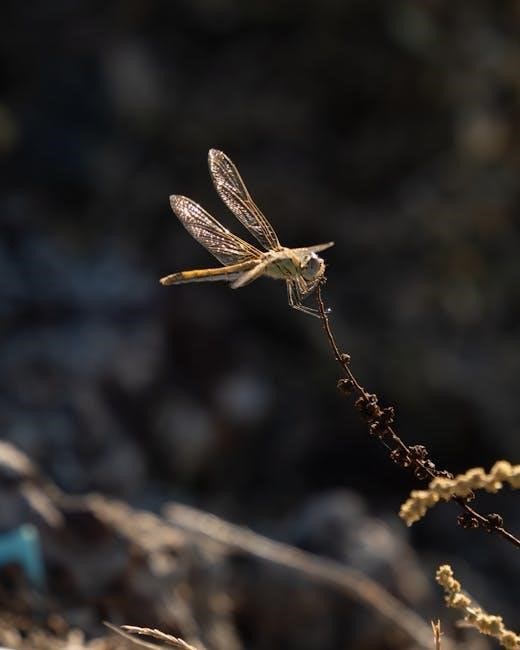
Key Characters
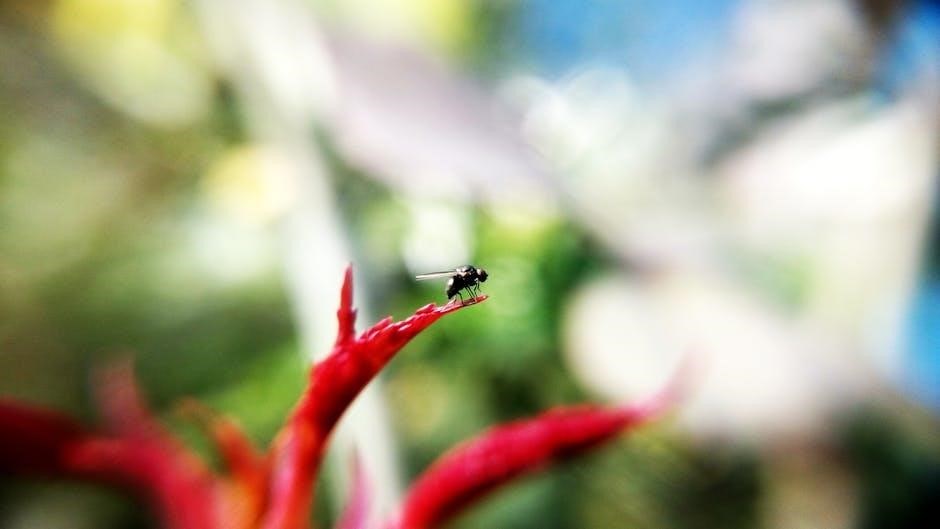
Ralph, Jack, Piggy, Simon, and Roger are central figures in the novel, each representing distinct aspects of human nature, leadership, and moral struggle in isolation.
Ralph: The Symbol of Order
Ralph, the protagonist, embodies order and democracy. Elected as the leader, he uses the conch shell to maintain civility and organize the group. His focus on building shelters and keeping the fire alive reflects his practical approach. However, as the novel progresses, Ralph’s leadership is challenged by Jack’s desire for power and hunting. Despite his efforts to uphold morality, Ralph becomes increasingly isolated, symbolizing the fragility of order in the face of savagery. His ultimate rescue by the naval officer marks the end of his innocence and the island’s dark descent into chaos.
Jack: The Embodiment of Savagery
Jack Merridew, the antagonist, represents the descent into savagery. Initially, he is part of Ralph’s group but becomes obsessed with hunting, symbolizing his primal instincts. Jack’s desire for power leads him to form his own tribe, embracing chaos and violence. His disregard for rules and the conch shell highlights his rejection of civility. Jack’s manipulation of others through fear and intimidation showcases his ruthless leadership. His transformation is marked by painted masks and ritualistic hunts, embodying the novel’s theme of humanity’s darker nature. Jack’s actions drive the island’s descent into anarchy, contrasting sharply with Ralph’s struggle to maintain order.
Piggy: The Voice of Reason
Piggy, the intelligent and rational member of the group, symbolizes wisdom and logic. Despite his physical vulnerabilities, he advocates for order, rules, and democracy. Piggy’s reliance on the conch shell underscores his belief in civility and fairness. His ideas, though often dismissed, provide crucial insights for survival. Piggy’s loyalty to Ralph and his commitment to common sense make him a moral anchor. However, his lack of physical strength and societal marginalization highlight the group’s disregard for intellectualism. Piggy’s eventual destruction symbolizes the loss of reason and the triumph of savagery on the island.
Simon: The Enlightened Outcast
Simon, a quiet and introspective boy, is often isolated by the others. His solitude allows him to uncover profound truths about human nature. During a pivotal moment, Simon discovers that the “beast” feared by the group is actually a dead pilot, symbolizing the true horror lies within themselves. His realization that the boys’ own savagery is the real monster is a crucial insight. Tragically, Simon is killed before he can share this truth, silencing the voice of reason and accelerating the group’s descent into chaos. His death marks the loss of innocence and the triumph of fear over understanding.
Roger: The Descension into Cruelty
Roger begins as a seemingly ordinary boy but gradually reveals a darker side. Initially, he appears harmless, but his loyalty to Jack and desire for power drive him to cruelty. He harnesses his sadistic tendencies, enjoying acts of violence, such as torturing animals and manipulating others. Roger’s actions escalate, culminating in the fatal act of dropping a boulder on Piggy, showcasing his complete disregard for morality. His transformation reflects the island’s corrupting influence, as he embraces savagery without remorse, becoming a symbol of unchecked aggression and the erosion of civilized behavior.
Symbols in the Novel
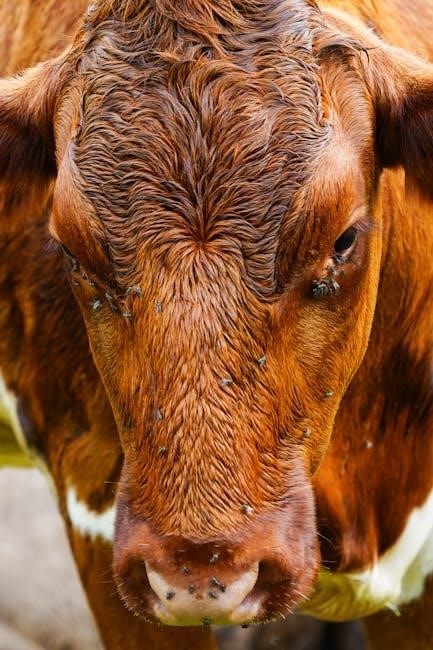
The novel is rich in symbolic elements, each representing deeper themes. The conch shell, beast, island, fire, and naval officer all carry dual meanings reflecting humanity’s nature.
The Conch Shell: A Symbol of Order
The conch shell is a powerful symbol of order and democracy in the novel. Found by Piggy, it is used to call meetings and ensure only one person speaks at a time. The shell represents civility and the boys’ attempt to create a structured society. Its significance fades as the group descends into chaos, symbolizing the erosion of order. The conch’s destruction late in the novel marks the end of rational discourse and the collapse of their makeshift civilization. It serves as a poignant reminder of humanity’s struggle to maintain order in the face of primal instincts.
The Beast: Fear and the Unknown
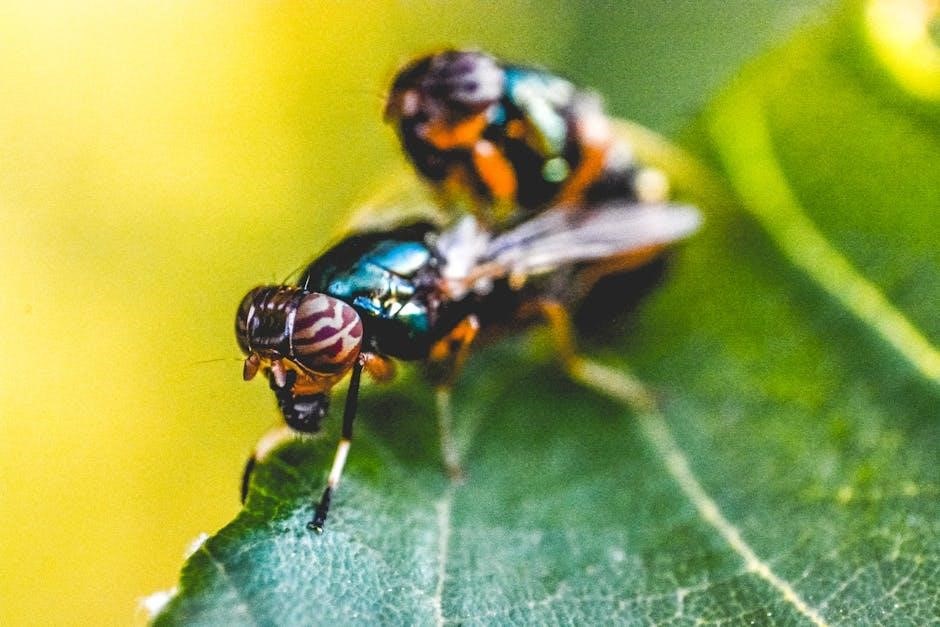
The Beast is a central symbol in Lord of the Flies, representing primal fear and the unknown. Initially, the boys believe it is a physical creature, but it evolves into a metaphor for their deeper anxieties. The Beast sparks paranoia, division, and savagery among the group, as their fear of it grows. The Beast’s presence is a product of their imaginations, yet it becomes a powerful force that disrupts their fragile society. Eventually, it is revealed that the Beast is not real, symbolizing how fear of the unknown can lead to chaos and destruction, undermining their attempts at civilization.
The Island: A Microcosm of Society
The island in Lord of the Flies serves as a microcosm of society, where the boys’ actions reflect broader human behaviors. The beach symbolizes a community space, while the jungle represents the untamed aspects of human nature. The conch shell, used to maintain order, parallels societal rules and governance. As tensions rise, the island’s divisions mirror societal conflicts, such as political divisions or power struggles. The boys’ descent into chaos reflects how societies can unravel without strong leadership and moral codes. The island’s isolation amplifies these behaviors, revealing inherent societal truths and vulnerabilities through their experiences and downfall.
Fire: Hope and Destruction
Fire in Lord of the Flies symbolizes both hope and destruction. Initially, it represents the boys’ optimism and desire for rescue, as they use it to signal for help. However, as the novel progresses, fire becomes a tool of chaos and destruction, especially when Jack’s tribe uses it to hunt and ultimately burns down the island. This duality reflects the broader themes of civilization versus savagery and the descent into chaos. Fire’s destructive power mirrors the breakdown of the boys’ society, symbolizing the loss of innocence and the unleashing of primal instincts.
The Naval Officer: The End of Innocence
The naval officer’s arrival marks the end of the boys’ innocence and their island experience. His presence symbolizes the return of civilization and authority, contrasting sharply with the savagery the boys have embraced. The officer’s disbelief at their condition underscores the depth of their descent into primal behavior. His rescue signifies the restoration of order but also forces the boys to confront the reality of their actions. The navy, once a symbol of security, now represents the harsh awakening to the consequences of their actions, leaving the boys forever changed by their journey.
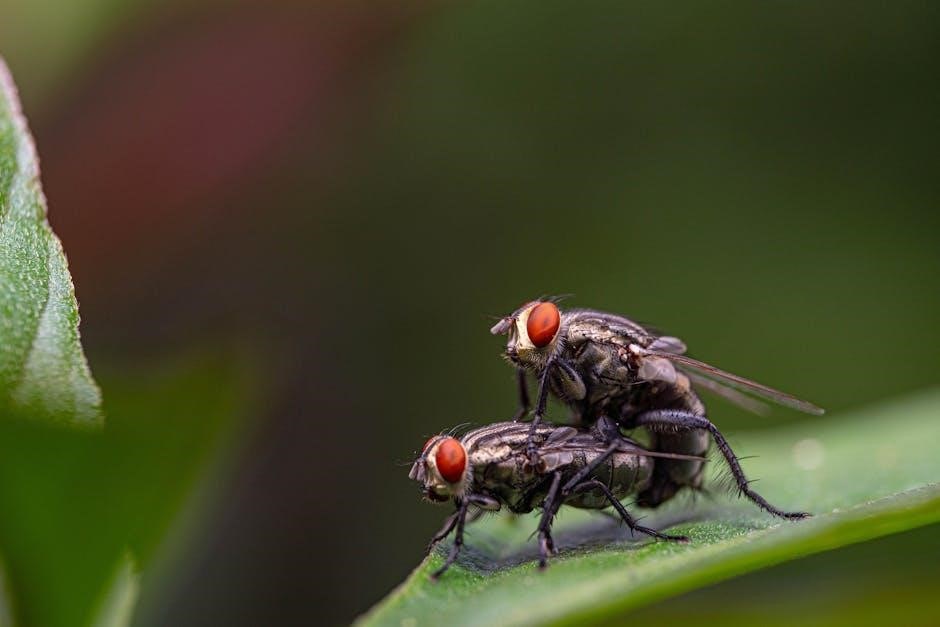
Themes of Leadership and Community
Leadership dynamics and community structure are central in Lord of the Flies. Ralph’s democratic approach contrasts with Jack’s authoritarian rule, highlighting the tension between cooperation and control. The boys’ inability to maintain unity underscores the fragility of community, revealing how leadership styles shape societal stability and the consequences of its breakdown.
Leadership Styles: Ralph vs. Jack
Ralph and Jack represent contrasting leadership styles in Lord of the Flies. Ralph embodies a democratic approach, emphasizing collective decision-making and the importance of rules. He focuses on building shelters and ensuring the group’s well-being, symbolizing order and civility. In contrast, Jack adopts an authoritarian style, prioritizing power and control. His obsession with hunting and dominance reflects a desire for dictatorship, leading to conflict and division. Their differing leadership approaches highlight the tension between cooperation and authoritarianism, ultimately contributing to the group’s fragmentation and the collapse of their makeshift society.
The Breakdown of Community
The breakdown of community in Lord of the Flies occurs as fear, power struggles, and savagery erode the boys’ initial unity. The group’s cohesion fractures when the “beast” becomes a shared fear, fostering mistrust and paranoia. Ralph’s democratic leadership is challenged by Jack’s desire for power, leading to the tribe’s splintering. The conch shell, once a symbol of order, loses its authority as chaos prevails. The community’s disintegration accelerates with Simon’s death and the hunt for Ralph, ultimately leaving the boys in a state of primal anarchy, stripped of their civilized norms and moral constraints.

Philosophical and Psychological Insights
The novel explores human nature, revealing how isolation and fear can unleash primal savagery. It highlights the psychological effects of power and the erosion of moral boundaries, reflecting Golding’s pessimistic view of humanity.
The Nature of Humanity
Golding’s novel portrays humanity’s inherent duality, revealing a fragile balance between civility and savagery. The boys’ descent into chaos reflects how societal norms mask primal instincts. Ralph embodies order, while Jack symbolizes the lure of power and primal urges. Piggy’s rationality and Simon’s enlightenment contrast with the group’s escalating violence, highlighting humanity’s capacity for both good and evil. The novel suggests that fear, power, and isolation can erode morality, exposing a darker, instinctual nature beneath the surface of civilized behavior. This exploration challenges optimistic views of humanity, offering a bleak yet profound insights into human frailty.
The Psychological Impact of Isolation
Isolation profoundly affects the boys’ mental states, amplifying fear, paranoia, and primal instincts. The absence of adult supervision accelerates their descent into chaos, as societal norms fade. The fear of the “beast” symbolizes the unknown, fueling irrational behavior and divisions. The conch shell, once a symbol of order, loses its power as isolation erodes their respect for civility. Without external constraints, the boys’ true nature emerges, revealing a darker side of human psychology. This isolation-induced breakdown highlights how quickly humanity can unravel when stripped of societal structures and accountability.

